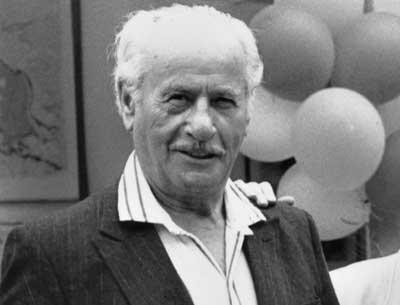Eli Wallach, 98, Star on Stage and Screen

Eli Wallach, a consummate character actor whose career bridged the acting techniques of the 20th century, died on June 24 at home in Manhattan at the age of 98. Mr. Wallach and his wife, the actress Anne Jackson, had a house in East Hampton for many years.
Some of Mr. Wallach’s earliest performances were as a college student in Austin, Tex. After graduating, he returned to New York, determined to become a professional actor, and made the life-changing choice of attending the Neighborhood Playhouse. It had a rigorous two-year program, with acting taught by Sanford Meisner and movement by Martha Graham. Meisner was one of the founding members of the Group Theater, a gathering of actors, directors, and writers that dominated creative theatrical thought in America for most of the century. Drafted by the Army in late 1940, he served five years in the medical corps, rising to the rank of captain. Returning to New York after the war, he made his Broadway debut in “Skydrift” by Harry Kleiner at the Belasco Theater. The play was a flop, and closed after a week.
He also became an early member of the Actor’s Studio, a pantheon of theatrical talent, a logical successor to the Group Theater movement. In 1946, Mr. Wallach appeared in a two-character play, “This Building Is Condemned,” by the then up-and-coming Tennessee Williams. The leading lady was Anne Jackson, and they were married on March 5, 1948. It was the beginning of two unions that lasted the rest of his life. He and Ms. Jackson worked together whenever they could and he continued to work with Williams over the years.
They became known for collaborations on off-beat classics like Eugene Ionesco’s “Rhinoceros” (1961) and “The Typists” and “The Tiger” by Murray Schisgal (1963).
His first big hit on Broadway was in Williams’s “The Rose Taatoo,” opposite Maureen Stapleton. Both leads won Tony Awards. He followed that with Williams’s “Camino Real” in 1953. Williams also provided the script for Mr. Wallach’s first film, the critically acclaimed “Baby Doll,” in 1956.
One of his most famous film roles was in the first film for which Arthur Miller wrote a screenplay: “The Misfits,” directed by John Huston in 1961. Besides Mr. Wallach the cast included the fellow character actor Thelma Ritter, along with Marilyn Monroe, Clark Gable, and Montgomery Clift. One of his most memorable roles was in “The Good, the Bad, and the Ugly,” an Italian spaghetti western directed by Sergio Leone, with Clint Eastwood and Lee Van Cleef, in 1966. In it, he was able to put his Texas experience with horses to good use, playing the desperate Tuco Ramirez.
Patricia Watt, a producer and friend, described Anne Jackson and Eli Wallach as a true theater couple, constantly rehearsing, particularly focusing on Williams. “Even when you would visit them, they were always working,” she said. “I think for Eli, he felt his great accomplishment was his interpretation of Tennessee Williams,” she said.
He was born in Brooklyn on Dec. 7, 1915, to Abraham Wallach and the former Bertha Schorr, who were Jewish immigrants from Poland. “Even in my earliest memories, my wish was always the same: I wanted to be an actor,” he wrote in his autobiography, published in 2005. He grew up on Union Street, where his father owned a candy store, and he played stickball and ringalevio on the streets with members of a boyhood gang, the Union Street Toughs. On Saturdays, the group would go to the Rialto Theater. He described acting out scenes he had seen after he got home. As a student at Erasmus High School, he joined the Flatbush Boys Club, which had a dramatics club. It was his first chance to act on stage in front of an audience. “Now I knew I was an actor.”
When he graduated from high school in 1932, the heart of the Depression, his cash-strapped family couldn’t afford college tuition for him or his sister, Sylvia. But his brother, Sam, told the family that Texas University was looking for out-of-state students and charging only $30 tuition. Off the two went to Austin. Though his sister returned to Brooklyn after one year to attend Brooklyn College, Mr. Wallach stayed on, taking various jobs. He exercised polo ponies, where he learned to ride horseback. He also took a job at the State Theater in downtown Austin, where he was able to watch touring Broadway companies.
The couple have been summering in East Hampton since 1955, and became a central part of the East End theater community, co-chairs of the sponsors committee of the Yale Repertory Company at Guild Hall in the 1970s. Later, they became strong supporters of the Bay Street Theater, with the organization naming its second theater space after them.
He also was active athletically in East Hampton, playing tennis and participating in the Artists and Writers annual softball game.
Mr. Wallach is survived by two daughters, Katherine Wallach and Roberta Wallach, both of New York City, a son, Peter Wallach, a sister, Shirley Auerbach, and three grandchildren.
Ms. Watt and the playwright Joe Pintauro both spoke about the couple on Monday, saying they never turned down a request to do a reading or a play. Mr. Pintauro said, “They were able to capture the comedy, and then the pathos.” He spoke of his effortless ability to capture a character. “He had a native gift. It was like a breath of truth.”
